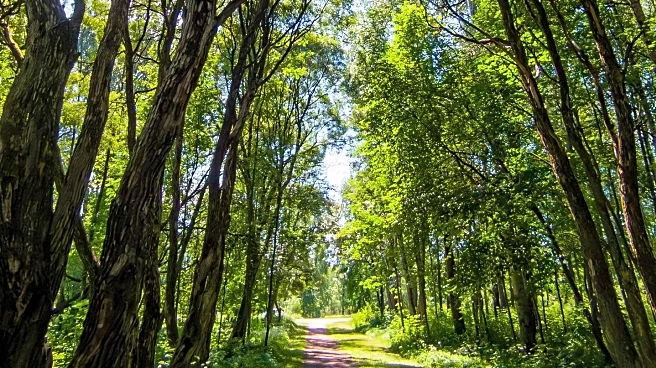What's Happening?
Forestry England has unveiled a new resilience strategy aimed at improving the productivity and ecological health of the nation's woodlands. The strategy focuses on assessing forest resilience at local
levels, diversifying tree species, and restoring ecological foundations. It emphasizes innovative approaches to nature recovery, timber production, and silviculture. The strategy is based on extensive research and aims to address potential ecosystem collapse in UK woodlands over the next 50 years. Forestry England's chief executive, Mike Seddon, highlighted the urgency of acting decisively to ensure forests thrive for future generations.
Why It's Important?
The resilience strategy is crucial for safeguarding the ecological integrity and economic value of UK woodlands. By enhancing forest resilience, Forestry England aims to protect biodiversity, support sustainable timber production, and provide recreational spaces for the public. The strategy's focus on scientific research and innovative management practices could set a precedent for forest conservation efforts globally. As climate change and environmental challenges intensify, the strategy may influence policy decisions and resource management approaches.
What's Next?
Forestry England will implement the strategy across its 1,500 woodlands, focusing on local assessments and management practices. The organization plans to collaborate with scientific institutions and stakeholders to refine its approaches and address emerging challenges. Future updates on the strategy's progress and impact will be closely monitored by environmental groups and policymakers. The strategy's success could lead to broader adoption of resilience-focused practices in forest management.
Beyond the Headlines
The strategy's emphasis on ecological restoration and species diversity highlights ethical considerations in resource management. As Forestry England addresses potential ecosystem collapse, discussions on conservation priorities and sustainable practices may arise. The strategy's long-term vision reflects broader societal shifts towards environmental stewardship and climate resilience. By fostering healthy forests, the strategy contributes to cultural and recreational values, enhancing public engagement with natural landscapes.











